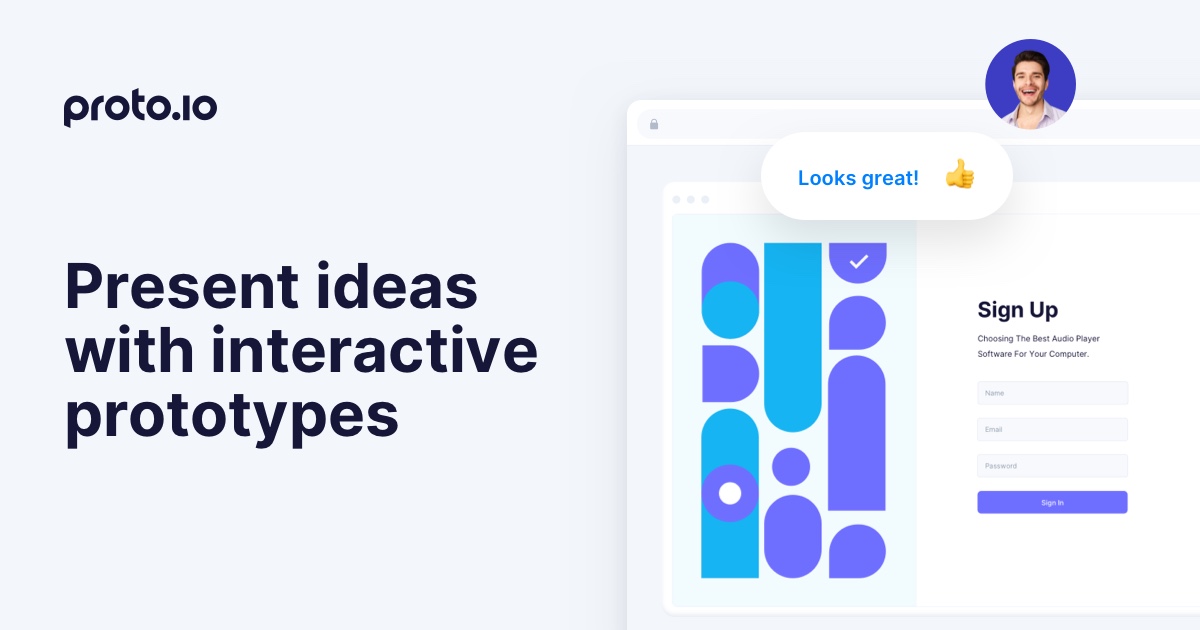Are product managers visionary leaders bringing the company together — or are they messengers, scurrying from department to department? Are you there to reengineer your organization’s rickety approach to the product, or just fill in the gaps?
All of the above.
Having a strong product management philosophy is crucial, but if you can’t optimize your approach to the needs of the product and the culture of the company, you won’t succeed. Here’s how to get the product management process right.
Define Your Product Management Role
To succeed as a product manager, you need institutional support — and that requires a clearly defined role. Unfortunately, many PMs never get either. Rather than analyzing the organizational factors leading to delays, overruns, poor marketing and development coordination, or other problems, many organizations just create a new job title and assume their PM will fix it.
This can be alluring for new product managers, because they go in with a lot of freedom. The reality is that this approach is a recipe for disaster for everyone involved. You can’t succeed at your job without clear expectations around why you’re there, what you’re supposed to accomplish, and just as importantly, what isn’t your responsibility. You need to address:
- Your basic responsibilities: Your job probably involves strategic activities like portfolio management and product roadmapping that overlap with other stakeholders. How are you dividing those responsibilities with the CEO and other decision makers?
On the tactical end, there are similar issues. Are you working with other managers to handle responsibilities like product requirements and beta testing?
What about product launch? Do you share responsibility in product marketing or quality? And if so, what pieces are you responsible for? These details may change over the lifecycle of the product, but you still need to have a clear understanding of where you fit in from the beginning.

- Metrics: Will success be measured by adoption? ROI? Engagement? Particular market or technical goals like growing Android adoption or integration with new software suites?
Or is your primary role to resolve specific problems like frequent delays or inconsistent alignment with customer demands?
Understanding exactly what improvements are expected is particularly important if the company has significant problems with its product management process. You can’t succeed if the company can’t explain what it wants from you. - Current PM Process Flow: You need to learn how the sausage gets made as quickly as possible. Not only will this allow you to pick up your role more quickly and smoothly, it will also provide an opportunity to demonstrate your value right off the bat by spotting and fixing broken links in the process chain.
You’ll need to do a lot of your own research here. Even if every department has well-documented procedures for everything, there’s no guarantee those procedures describe how things actually get done.
Create a Customer-Focused Product Management Mission
Thought leaders often talk about product managers as the interpreters connecting the customer with technical and business stakeholders. This model isn’t wrong, but it’s a little reductive. For Jeff Whitlock, CEO and Founder at Unbird and veteran product manager, the interpreter concept was very useful when he was a new product manager, but it hasn’t held up well over time.
“This model soon began to break down as a tool to help me excel at my job. I had concerns:
- Why are UX, Tech, and ‘Business’ three separate circles? And why do they need a go-between? Shouldn’t everyone on the team work to bring these circles together?
- What is ‘the business’ anyway? Customers? Executives? Investors?
- Is the only value I’m adding being a network router?”
Whitlock created his own model, focused on an exchange he calls the Product Value Cycle. In this framework, businesses make a transaction with customers where both benefit.

“Companies get information about the customer, money, and some form of word-of-mouth from customers. Customers get a product, support for that product, and branding… [and] content.” In his view, the role of a product management is to enable and support this cycle.
The idea is pretty simple, but it helped Whitlock to define his priorities. It showed him he needed to focus on the customer, by strengthening the connection between customers and the organization and creating a customer-focused internal culture.
He also believes product managers should contribute directly to product delivery using whatever skills they have, from coding to copywriting. That way, you earn your team’s respect, which empowers the product manager to improve the company culture.
Whitlock has a great model, but it’s not the only model, and it may not be the right one for you. The important takeaway is that over time you must grow beyond the specifics and find a framework that gives your role meaning and an underlying structure.
If you spend all your time as a go-between and don’t have a higher purpose, you’ll stop learning and burn out. To change your organization for the better, you need to develop a sense of mission within it.
Collaboration, Empowerment, and the Product Management Process
For a product manager, eliminating inefficiency is core to the job — yet, PMs are often stretched so thin that they can inadvertently contribute to it. Overlaps with marketing, sales, and other roles can lead to process duplication. Lack of interdepartmental cooperation results in data siloing. Poor visibility causes friction and inefficiency.
There’s no easy path to solving these problems — no set of product management steps to synchronize the whole organization. In fact, overreliance on process can be part of the problem. It’s easy to fall into the trap of optimizing your role, rather than working with others to change the company culture.

The solution is to collaborate in a way that empowers the people around you, and brings them into your process. Talk to marketing about benchmarking — what they’ve done, what has been valuable, what hasn’t worked — and ask how you can help them reach their goals.
Sit down with your sales team, learn what concerns customers have and give them a voice in setting goals and priorities. Get input from your engineers: how can you support them? What priorities do they see as most important? What ideas do they have for the product?
The more you empower different stakeholders in your organization, the more they will empower you. You’ll gain a deeper insight into the priorities and processes of each department, and a growing network of allies eager to help you bring the whole team into alignment.
Become an Expert at Product Testing
Most product managers don’t have scientific training, but we’re expected to test products like we do. Massive investments, months or years of development, and the hopes and dreams of the company often rest on inexpertly-designed experiments that allow all sorts of flawed assumptions and bias to sneak in.
This situation is complicated by limited resources and product management workflow constraints. PMs often have to derive firm conclusions from a very limited amount of data under conditions that are far from ideal.
For example, let’s say you’re building an app that delivers bite-sized market updates to busy executives on the go. You decide to test it under real-world conditions to make sure it’s usable when executives are pressed for time, on the move, and dividing their attention.
Ideally, you’d recruit executives for your usability testing, and have them try out your app in various situations and give you feedback. You might have one try it during a crowded morning commute on the subway, another test it out while checking email during a quick lunch break, and so on.
However, when you go to test it, you can’t find busy executives willing to take the time out of their schedules. You end up having to settle for testers outside your demographic, in tests that don’t quite pose the same pressures.
But the educated professionals you recruit aren’t necessarily going to have the same reaction as your end users. They may not be as interested in markets, or as pressed for time. They may have different usage patterns or UX preferences. You have to make extra assumptions about what your testers have (and don’t have) in common with your demographic as mobile app users. And those assumptions pose opportunities for error.
It takes practice to be able to make accurate inferences based on limited data, so you need to make testing a priority. As you try new methods, record successes and failures and refine your experimental procedures, you’ll get better at picking the right tool for each situation and reading the results accurately.
You also need to learn to think like a scientist. That means creating tests that evaluate a well-defined hypothesis, honestly identifying your own biases and those of your organization, and evaluating the evidence as objectively as possible. However, to really maximize the benefits of user testing, you may need to rethink how it fits into the product development process.

Prototype, Test, and Refine Until You Have Something Worth Building
Management doesn’t like waste — and killing a new product (or improvement upon an existing product) feels like waste. You’ve put all that time into market research, brainstorming a solution, and testing it out on users, only to find that your users don’t want it.
There’s a lot of pressure to ship the flawed product anyway, just so it feels like you’re getting somewhere. This isn’t intentional (no one wants to build and ship lousy software, or design and develop a buggy mobile app). It’s built into the way the requirements and design phase are structured in most organizations. The Silicon Valley Product Group has a great example:
Let’s say you’re given a 4-week timeline to prepare before the engineers will be available to work on your product. Management expects you to define the new product and accurately assess how the product will solve a customer’s pain point. Four weeks seems like an eternity from now, so you feel confident you can turn something around easily.
“You’ll start with an opportunity assessment to understand the problem to be solved, then you’ll spend quality time interviewing real users, and identify a preliminary set of requirements. By the start of the second week you should be able to work with an interaction designer on a prototype, and in the third week you’ll do user testing with the prototype. In the fourth week you’ll flesh out the details of the use cases and review the prototype and spec with engineering.
These are all great practices. But what happens isn’t usually so great. During your initial user discussions you find that users aren’t as excited about the idea as your management was, and/or you struggle to come up with a prototype that users can figure out, and/or the users aren’t excited about the ideas in the prototype when they test it. But the time is up, the engineers are ready, and the result is that during the next three to six months, engineering proceeds to build that same unusable and unexciting product that you saw in your prototype, and you ship, and then your management is of course disappointed in the results.”
When you’re looking to create a new product or add fundamentally new functionality, there’s no guarantee that your first idea will pan out — or your second, or your fifth. SVPG recommends replacing requirements and design with “product discovery” to emphasize that you’re discovering whether there really are users who want the product you’ve envisioned, and what solution will be “usable, useful, and feasible.”
We wholeheartedly endorse that idea. But refining your product management workflow to do more in prototyping is also crucial. If your prototyping tool empowers all stakeholders and creates fully-functional prototypes, you can effectively go through multiple product cycles at once.

You can build, test, and handle the vast majority of your quality assurance tasks in the prototyping phase faster. That means you can build out multiple solutions at once, leave time for a few failures and a lot of tweaking, and build something that really meets customer demand — in the timeframe you’d normally spend on one potential solution.
A browser-based prototyping tool with integrated testing can make this process much easier. Your team can send out links to remote testers, allowing them to quickly load and demo prototypes without a lot of setup or configuration.
You’ll be able to quickly record demos and tutorials as needed, monitor usage patterns, and get feedback remotely. With good planning, you can test multiple prototypes at once, starting as soon as they’re completed and evaluating the results the very next day!
Great Product Management Requires Great Tools
Product management is one of the most challenging jobs in app development, but it can also be one of the most rewarding.
With the right tools, you can stop racing to catch up, and start delivering a better product with a more effective workflow. Proto.io helps product managers by accelerating development and empowering all stakeholders, helping you make better decisions.
Proto.io lets anyone build mobile app prototypes that feel real. No coding or design skills required. Bring your ideas to life quickly! Sign up for a free 15-day trial of Proto.io today and get started on your next mobile app design.
How are you working to improve your product management process? Let us know by tweeting us @Protoio!






